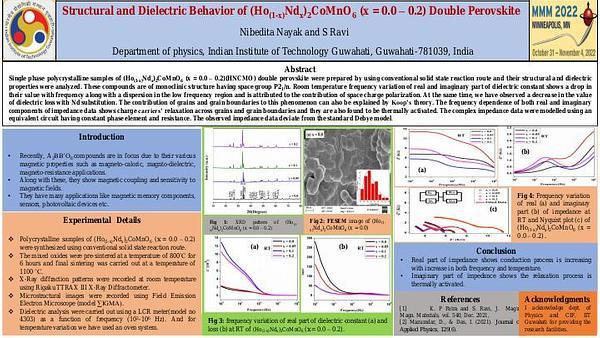
Premium content
Access to this content requires a subscription. You must be a premium user to view this content.

poster
Competing magnetic states in Sm7Pd3
We present results obtained within the density functional theory framework with the focus on understanding magnetic properties of Sm7Pd3 compound. The binary Sm7Pd3 compound crystallizes in the Th7Fe3-type structure, space group in P63mc, in which the samarium atoms occupy three independent sites two 6(c) and one 2(b), and the palladium atoms occupy a single 6(c) site. To get the correct effect of the localized Sm 4f states and account for the strong correlations between f, d and p states of constituent elements, we used the full potential linearized augmented plane wave (FP-LAPW) method as implemented in WIEN2k, along with the localized treatment of 4f states using the Hubbard U approach. Theoretically derived magnetic anisotropy confirms experimental observations, where the c-axis represents the easy magnetization direction. By evaluating possible magnetic states, including ferromagnetic, ferrimagnetic and partial antiferromagnetic arrangements of the magnetic moments, we find that assuming ferrimagnetic Sm7Pd3 leads to the best match between the calculated and experimentally observed molar magnetic moments. We also analyze and discuss how f, d, and p electrons contribute to the emergence of rather unusual magnetic phenomena observed experimentally in the magnetically hard Sm7Pd3 magnet.
Acknowledgment:
This work was performed at Ames National Laboratory and supported by the Division of Materials Science and Engineering of the Office of Basic Energy Sciences, Office of Science of the U. S. Department of Energy (DOE). Ames National Laboratory is operated for the U.S. DOE by Iowa State University of Science and Technology under Contract No. DE-AC02-07CH11358.

